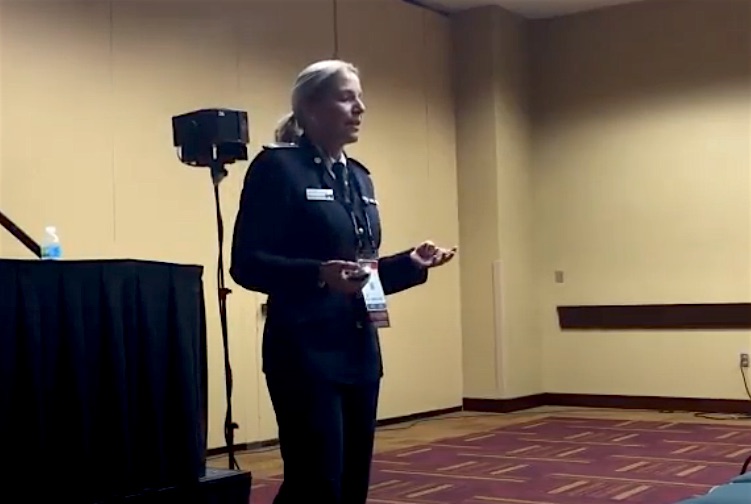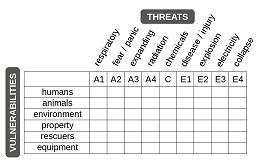
By Susanne Klatt
When comparing line-of-duty deaths (LODDs) and fireground injuries, the United States leads many countries in these numbers. To understand the differences in training and safety standards, this article describes the specific standards in the German fire service. Training standards equate to fireground operational safety. By learning from the country’s best practices and standards, firefighter safety and health concerns can be increased.
The German fire service is in many aspects similar to the U.S. fire service, but there are also some differences. Because of the federalism, fire protection falls under legislation of the 16 German states. This leads to 16 fire service laws, which have many similarities but also differ in some details such as when a city has to establish a career fire department. Because of the subsidiarity principle, the communities are responsible for establishing and maintaining a functioning and adequate fire department. The states decide what is considered adequate, but they usually follow acknowledged rules. Because of the federal structure, there is no single “German Chief Fire Officer,” no single “German law on Fire Services,” and no “National Fire Academy.” And the German fire service isn’t part of the military.
RELATED FIREFIGHTER TRAINING
Firefighter Maydays: Why Does NIOSH Keep Making the Same Recommendations?
The Seven Deadly ‘C’s of the Fire Service
The Fire Officer’s Role in Reducing Firefighter Line-of-Duty Deaths
Reducing Firefighter Injuries and LODDs
The numbers of firefighter fatalities seem a lot higher in the United States, about 106 per year, than in Germany, about seven per year. But why? Is the training in Germany different or even better?
To answer this question, I will describe the way we train our firefighters in Germany. The minimum formal training for volunteer firefighters is 150 hours during weekends or evening sessions; this equals nearly four weeks of fulltime training. To fight fires in interior attacks using self -contained breathing apparatus (SCBA), an additional 45 hours of SCBA and radio communications training are mandatory. To lead such a two-member team, firefighters must participate in 35-hours of team leader training. Additional training is required to become a group or a squad leader responsible for one apparatus, a platoon leader responsible for up to five apparatus, or a battalion chief responsible for up to five platoons. Each class takes about two weeks. The basic training for career firefighters is six months fulltime. It is followed by training on the job at fire stations and extra training like driver/operator, Hazmat, and emergency medical technician, and takes at least 18 months overall. In some states, it takes 24 months. To become a career fire officer, it takes between one year, if you move up through the ranks, or two years, if you start as a fire officer trainee with an academic background.
During all these different training programs, the first thing they hammer into our heads is that your safety comes first! We risk a lot if we can save a lot, but if it is unlikely that someone can be saved, we don’t sacrifice ourselves. On every incident scene, we must make a cost-benefit analysis!
The number of hours we put into the training of firefighters, of course, doesn’t necessarily say anything about the quality of training. Despite the different fire service laws in the 16 German states, the training regulations are developed and recognized by all states alike and are mandatory to become an active firefighter. From what I researched about firefighter training according to National Fire Protection Association 1001, Standard for Fire Fighter Professional Qualifications, the number of training hours can vary between the states.
In addition to the basic training regulation, several other standards for specialized training exist as nationwide regulations—for example, SCBA; rapid intervention team; technical rescue; fire service diving; chemical, biological, radiological, nuclear/hazmat; Incident Command System; using ground ladders; rope rescue; apparatus operator. Also, more and more fire departments adopt standard operating procedures to set communal standards throughout their departments. Also, mandatory continuing training is regulated by national standards like an accident prevention regulations lecture once a year, mandatory SCBA training two times a year, Hazmat suit training once a year, or lectures for drivers/engineers once a year.
One of the central aspects of leadership training, and that starts as a team leader, is the decision-making process. This process is similar to the classical decision-making process. It starts with the size-up of the problem to gather as much information as possible. The second stage is planning; during this part, especially the so-called “matrix of risks or threats” is an integral part to decide which kind of action should be taken.

This matrix also includes our personnel. The planning process within the decision-making model is comprised of four tactical options to act and save people or property. The first is saving the people or valuable objects before putting out the fire. The second is attacking the fire first, before we take care of the victims. The third is defense, meaning putting a barrier between the people or things we try to save. This could be something like a water curtain between two buildings to prevent expansion if we can’t safely extinguish the fire or closing doors or using smoke curtains to prevent smoke from entering smoke-free areas. The fourth is retreat. If there is no safe way to take care of the problem and the cost-benefit analysis shows that the risk for our personnel is too high, this option is legitimate. It doesn’t mean that we would leave the incident scene, but we would probably wait for a better opportunity to implement one of the other tactical options.
What else do we do that might have an impact on firefighter safety? One thing is medical exams. For many tasks in the fire service, regular medical exams are mandatory–the use of SCBA (every three years, every year if older than 50); rope rescue/working at heights (at least every three years); fire service diving (every year); driver/operator (every five years when you extend the truck driver’s license); vaccinations check (every three years). Depending on the tasks firefighters must perform, they will have a medical check every year. For career personnel, a very thorough entry exam is mandatory to enter the fire service. The same examination takes place when you become a lifetime civil servant after about five years of service. All these examinations are in place to implement the so-called “duty of care” the employer has for all employees. More and more volunteer fire departments also require entry medical exams to provide this duty of care. If firefighters fail the medical exam, they will be excluded from specific tasks or must leave the active fire service. Depending on the reason of failure, the firefighters can undergo a medical treatment or special training so they can pass the medical test again.
In addition to the training standards, many technical standards exist in the German fire service. Similar to the U.S. American National Standards Institute (ANSI) or NFPA, there is a German Institute for Standardization (DIN) and the European Committee for Standardization (CEN) that develop codes and standards also for the fire service. Typical standardized items are hoses, hydrants, fire service pumps, apparatus types, SCBA, radios, and many more things. This leads to a similar technical standard throughout Germany, and it is absolutely possible to send a crew from Hamburg to Munich and they would be able to connect their hoses, exchange their SCBA, and communicate with their radios–if they understand each other’s dialects.
When I started in the fire service more than 25 years ago, I was eager to fight fires, and fire prevention seemed the natural enemy because of all the building codes and fire prevention campaigns, but soon I realized that these codes are in place to save lives; not only the lives of citizens but also the lives of our crews. In Germany, the purpose of fire prevention by law is to enable effective firefighting operations and enable people to leave a building. Even with newer lightweight construction, fire resistance is often 30 minutes. Also, really old buildings have a pretty good fire resistance because of the large diameter of the wooden structures. I barely ever heard about firefighters falling through roofs or floors during firefighting operations. Even after an initial search and rescue, we usually can still do an interior attack relatively safely. So, after all, fire prevention puts us in a position to “have fun” and be safe. Fire prevention is now my best friend.
All these different aspects provide fireground safety in Germany. We know that we’ll never reach 100 percent when it comes to safety, but by putting all these different parts into action, we try to reach this goal as closely as possible.
SUSANNE KLATT is a division chief with the Essen, Germany, Fire Department. She began her fire service career in 1992 and has served as a division chief since 2008; she supervises and commands more than 190 fire officers and firefighters and serves as an incident commander for large incidents of all types. She has a master’s degree in engineering.

